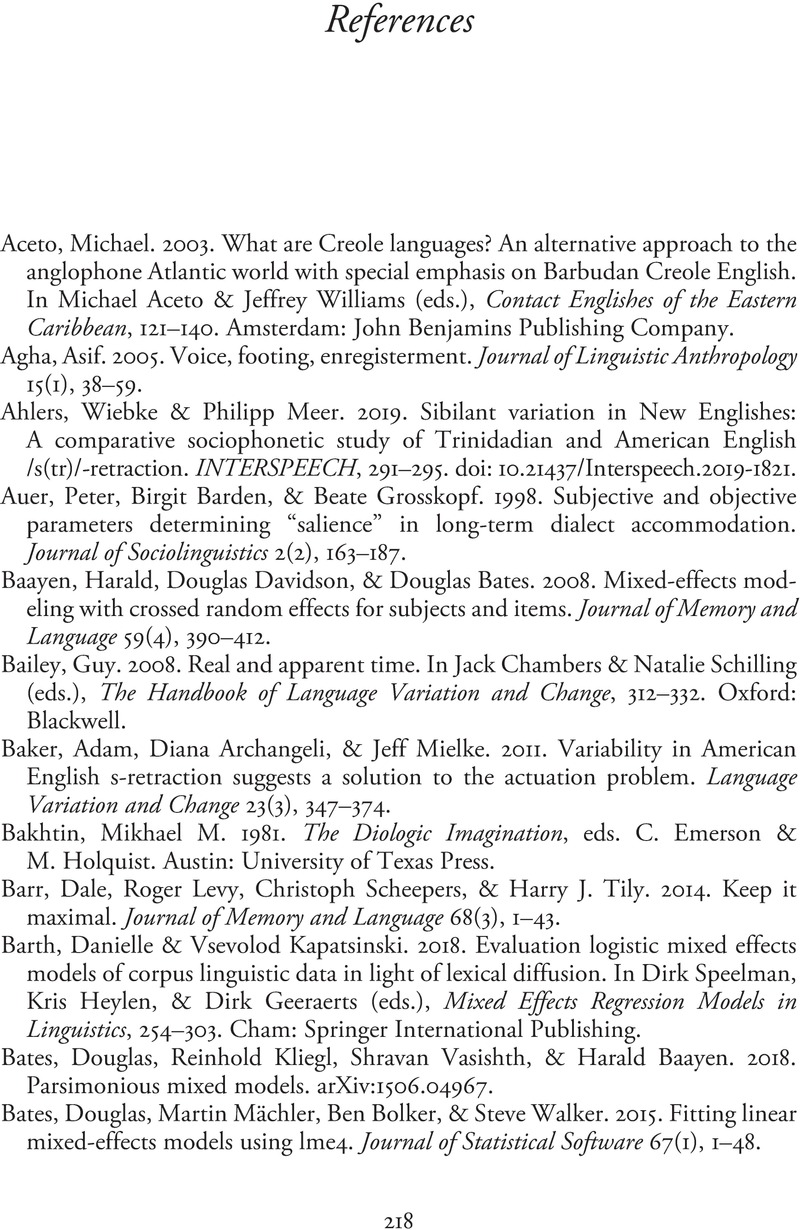Book contents
- Consonantal Sound Change in American English
- STUDIES IN ENGLISH LANGUAGE
- Consonantal Sound Change in American English
- Copyright page
- Contents
- Figures
- Tables
- Acknowledgments
- Chapter 1 Introduction
- Chapter 2 Phonetic and Phonological Background for Sibilant Analysis
- Chapter 3 Sound Change
- Chapter 4 Methodology and Data
- Chapter 5 Results
- Chapter 6 Discussion
- Chapter 7 Conclusion
- Glossary
- References
- Index
- References
References
Published online by Cambridge University Press: 10 August 2023
- Consonantal Sound Change in American English
- STUDIES IN ENGLISH LANGUAGE
- Consonantal Sound Change in American English
- Copyright page
- Contents
- Figures
- Tables
- Acknowledgments
- Chapter 1 Introduction
- Chapter 2 Phonetic and Phonological Background for Sibilant Analysis
- Chapter 3 Sound Change
- Chapter 4 Methodology and Data
- Chapter 5 Results
- Chapter 6 Discussion
- Chapter 7 Conclusion
- Glossary
- References
- Index
- References
Summary

- Type
- Chapter
- Information
- Consonantal Sound Change in American EnglishAn Analysis of Clustered Sibilants, pp. 218 - 231Publisher: Cambridge University PressPrint publication year: 2023

